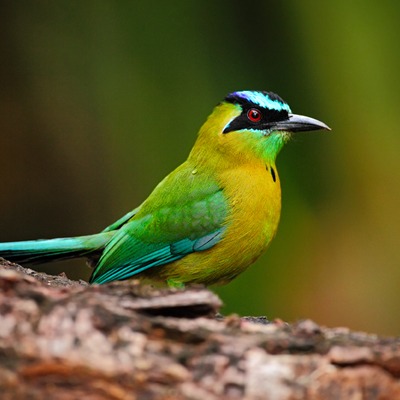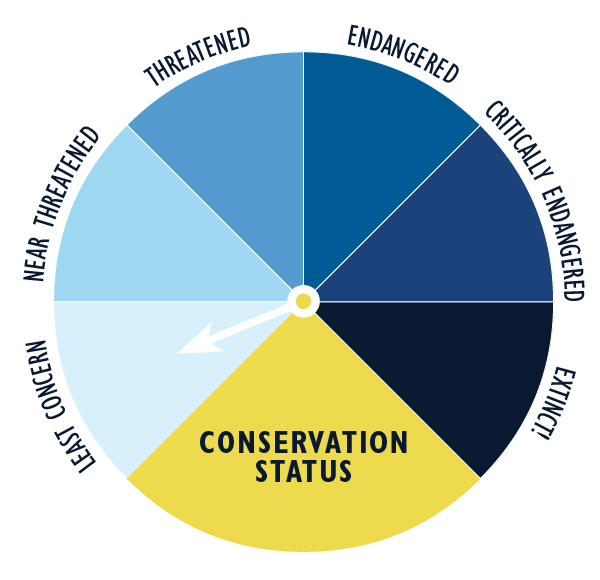
About Blue-Crowned Motmot
Habitat
The blue-crowned motmot typically resides in rainforests, second-growth forests, forest edges, shady gardens, and shaded coffee farms. They can be found throughout Mexico, Central America, and most of South America.
Diet
This species is primarily insectivorous, meaning insects consist of most of their diet. They also include fruits in their diet.
Family Life
Blue-crowned motmots live in pairs, never flocks. A pair will have three to five chicks per clutch or group of eggs. In order to appeal to a potential mate, blue-crowned motmots will sometimes be seen carrying inedible objects in order to impress a mate or disrupt an established pair.
Conservation Status
The conservation status of the Blue-Crowned Motmot is classified as least concern.
Threats
- The blue-crowned motmot is not threatened, but the conservation status may change if habitat destruction continues to persist.
- Some indigenous tribes use the blue-crowned motmot’s tail feathers and wings for decoration.
Facts about Blue-Crowned Motmot
Class:
Aves (birds)Order:
Coraciiformes (kingfishers and relatives)Family:
Momotidae (motmots)Genus:
Momotus (motmots)Species:
Momota (blue crowned motmot)Life Span:
15 years (wild) / 25 years (zoo)Size:
16 inches (40.6 cm)Weight:
3.6 ounces (102 g)
Fun Facts
- Great diggers! The blue-crowned motmot digs elaborate nests below ground.
- Teamwork makes the nest work! Both males and females participate in nest building.
- The word “motmot” is an American-Spanish word coined as an imitation of the call the birds make.